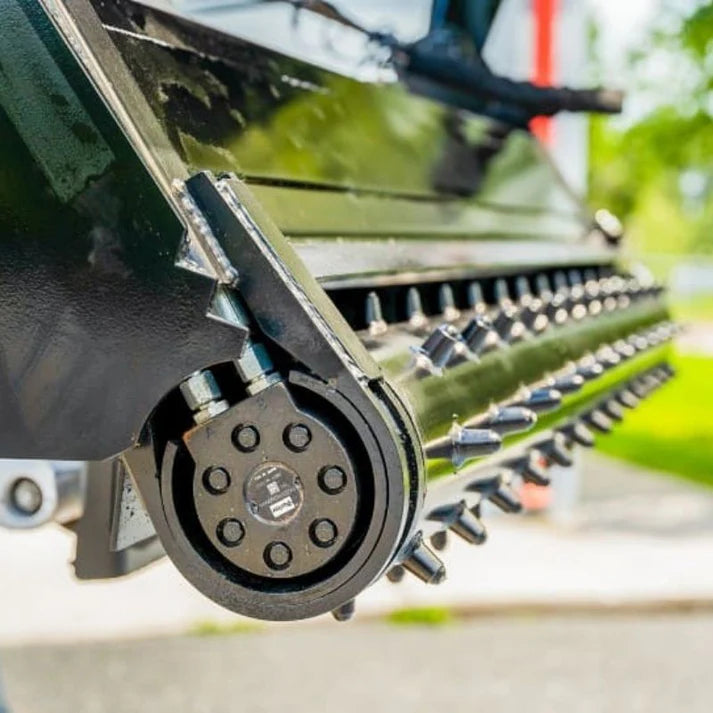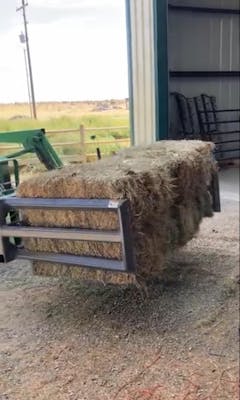-
Skid Steer 6 Way Dozer Blade | Blue Diamond
From $10,120.00 USDRegular price From $10,120.00 USDSale price From $10,120.00 USD Regular priceUnit price / per$10,120.00 USD -
Snow Blower Extreme Duty | Blue Diamond
From $12,749.99 USDRegular price From $12,749.99 USDSale price From $12,749.99 USD Regular priceUnit price / per$14,297.00 USD-10%Sale -
Snow Blade - Skid Steer & Tractor - Berlon Industries
From $4,536.99 USDRegular price From $4,536.99 USDSale price From $4,536.99 USD Regular priceUnit price / per$5,042.00 USD-10%Sale -
Snowgrr™ - Skid Steer & Tractor - Berlon Industries
$14,456.99 USDRegular price $14,456.99 USDSale price $14,456.99 USD Regular priceUnit price / per$16,064.00 USD-10%Sale -
Low Profile Snow Pusher - Skid Steer & Tractor - Berlon Industries
From $2,999.99 USDRegular price From $2,999.99 USDSale price From $2,999.99 USD Regular priceUnit price / per -
Snow Pusher for Tractor, Telehandler, and Skid Steers | Haugen Attachments
From $6,499.99 USDRegular price From $6,499.99 USDSale price From $6,499.99 USD Regular priceUnit price / per -
V-Blade | Blue Diamond
From $8,254.99 USDRegular price From $8,254.99 USDSale price From $8,254.99 USD Regular priceUnit price / per$9,054.00 USD-8%Sale -
Heavy Duty Snow & Light Material Skid Steer Buckets - Star Industries
From $2,099.99 USDRegular price From $2,099.99 USDSale price From $2,099.99 USD Regular priceUnit price / per -
Snow Pusher - Skid Steer & Tractor - Berlon Industries
From $5,199.99 USDRegular price From $5,199.99 USDSale price From $5,199.99 USD Regular priceUnit price / per -
High Capacity Snow Bucket - Skid Steer & Tractor - Berlon Industries
From $2,375.99 USDRegular price From $2,375.99 USDSale price From $2,375.99 USD Regular priceUnit price / per$2,502.00 USD-5%Sale -
Heavy Duty High Capacity Snow & Light Material Buckets - Star Industries
From $2,179.99 USDRegular price From $2,179.99 USDSale price From $2,179.99 USD Regular priceUnit price / per -
Mega Snow Bucket for Skid Steer -Haugen Attachments
From $3,399.99 USDRegular price From $3,399.99 USDSale price From $3,399.99 USD Regular priceUnit price / per -
Medium Snow Bucket for Skid Steer - Haugen Attachments
From $3,199.99 USDRegular price From $3,199.99 USDSale price From $3,199.99 USD Regular priceUnit price / per -
Standard Snow Bucket for Skid Steer - Haugen Attachments
From $2,249.99 USDRegular price From $2,249.99 USDSale price From $2,249.99 USD Regular priceUnit price / per -
Snow Blade | Top Dog Attachments
From $3,299.99 USDRegular price From $3,299.99 USDSale price From $3,299.99 USD Regular priceUnit price / per -
Snow Pusher | Top Dog Attachments
From $2,299.99 USDRegular price From $2,299.99 USDSale price From $2,299.99 USD Regular priceUnit price / per

Snow Blades
Your all around best option for general snow clearing or wet or dry snow is the snow blade. There is an assortment of different sizes that you can choose from, and the proper size should be carefully considered.
<br>
<br>
Ideally a <a href="https://skidsteersdirect.com/collections/skid-steer-snow-plow" target="_blank" rel="noopener noreferrer">snow blade</a> should always be wider than the wheel base or tracks of your skid steer. Remember that you’ll often be using your snow blade on an angle to push snow to the side, so the blade must be long enough to cover your wheel base at an angle.
<br>
<br>
Your hosepower should be the next consideration. Having a large blade sounds great, but if you don’t have the horsepower to push it when it’s full of snow, it’s no good for you.
<br>
<br>
Most snow blades are going to be hydraulically operated so the blade can be tilted 30 degrees to either side. Standard flow auxiliary hydraulics is all that is needed for this.
<br>
<br>
Cutting edges on the bottom of the blade are typically reversible for twice the service life. Consider upgrading to a poly edge to prevent damage to driveways.

Snow Buckets
A snow bucket is another must have tool for your winter arsenal. Snow buckets are designed specifically to pick up snow in large amounts and deposit it elsewhere. This is a great option for smaller areas like driveways where a snow blade isn’t possible.
<br>
<br>
Snow buckets are designed to have a high heaped capacity on account of snow being lighter than gravel or earth. As a rule of thumb, snow weighs about 20lbs per cubic foot, where gravel can easily be 95 pounds per cubic foot.
<br>
<br>
Large snow buckets will typically have a cut out on the top of the back of the bucket to help the operator see the cutting edge of the bucket when operating.
<br>
<br>
The size of the snow bucket you need is largely dependent on your skid steer. Just like the snow blade, your bucket should be wide enough to cover the wheelbase of your skid steer. Additionally, you should consider the lifting capacity of your skid steer. For example, a standard 78” snow bucket will have a heaped capacity of 28.75 cubic feet. If snow on average is 20 pounds per cubic foot, your skid steer will have to lift 575 pounds of snow, plus the 570 pound bucket for a total of 1145 pounds.
<br>
<br>
Of course if your loader can handle more than this, you may consider a larger snow bucket, such as Haugen Attachments “Medium Snow Bucket”or “Mega Snow Bucket”.

Snow Blowers

A Skid Steer snow blower is a good all around option for general snow clearing as well. Instead of needing pure horsepower to move snow, a snow blower harness power from your skid steers auxiliary hydraulics. This is a great option for many operators, with the only drawback being the addition of many moving parts.
<br>
<br>
When selecting a snow blower for your skid steer, ensuring you pick one designed to be compatible with your hydraulic flow rate is important. The overall weight of the snowblower is generally less of a restricting factor, but also important to consider.
<br>
<br>
Consider what cut width and height you are looking for as well. Additional considerations are if the blower has shear pins to protect moving parts, fan blades and style of auger flight.
Snow Pushers

Snow pusher attachments are available for skid steers as well. These work like a large box, and are designed to push large amounts of snow.
<br>
<br>
Unlike the snow blade, the snow pusher is not designed to dump snow off the sides. Therefore you skid steer requires good traction, and lots of horsepower.
<br>
<br>
<a href="https://skidsteersdirect.com/collections/skid-steer-snow-pusher" target="_blank" rel="noopener noreferrer">Snow pushers</a> also aren’t designed to lift snow like a snow bucket. Pushing large amounts of snow along the surface is the extent of what you’ll be doing with your snow pusher.
<br>
<br>
A well designed snow pusher will come with a moldboard on the inside, similar to the snow blade. The moldboard helps to curl the snow back in front of the pusher when the skid steer is moving. This action prevents snow from piling up over the attachment.
Salt & Material Spreader

A <a href="https://skidsteersdirect.com/collections/salt-spreaders" target="_blank" rel="noopener noreferrer">sand or salt spreader for your skid steer</a> is an essential item for slip and fall protection. Your skid steer makes spreading material over a large area very efficient.
<br>
<br>
As a general rule, for winter maintenance, salt is the best option in climates that linger around the freezing mark, and sand is best used in climates that experience extreme cold. <a href="https://skidsteersdirect.com/blogs/news/sand-or-salt-for-winter-maintenance">Read our Salt or Sand Blog to learn more.</a>
<br>
<br>
Choose a skid steer spreader that is self loading. That is, you can use the spreader to scoop material up like a bucket.
<br>
<br>
Additionally, spreader attachments can be used in the warmer seasons to spread other materials as well. Many of our customers have used spreader attachments for fertilizers and seeding in pastures.
<br>
<br>

























